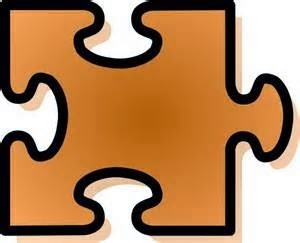Storytelling: Necessity
Storytelling is like a jigsaw puzzle when you don’t always knows the number of pieces you need to complete the picture.
When I write a first draft, I feel like I’m finding all the end pieces and putting together the frame, then fitting in the pieces that make up the primary images of the picture.

What I don’t always know is that I might need to create a piece to fit a particular hole in the story.
In Dead Hungry, the character of Steiner came about out of necessity. There was a hole in Joyce’s story. As Joyce discovers that she is a Ghoul, at first she is mentored by Hector, the leader of a small Ghoul community. Originally, Hector was going to be the one to teach her the ins and outs of feeding on the dead.
Except Joyce had no emotional connection to Hector. He is so busy being a respectable Ghoul that he overlooks that others might not be as comfortable with eating corpses. Joyce needed someone who could empathize with her struggle whether to give into to her Ghoul nature.
Enter Steiner. Practically feral, he recognizes Joyce’s unexpressed desire to hunt and attempts to coach her through the animal nature to kill and feed.
But that’s not what Joyce wants. She’s fighting to retain her humanity, and Steiner represents the exact opposite.
In the first draft, Steiner was a minor character in only one scene which didn’t even involve Joyce. But as I continued to develop her story, I needed more Ghouls to fill out the community. Then as I discovered the depth of Joyce’s struggles, I realized that Steiner spoke to that animal hunger.
When I started writing the book, Steiner was nowhere to be found. By the time I finished revising it, he’d become an integral part of Joyce’s story.
The story had a Steiner-shaped hole, and the only way to fill it was to create him.
When I write a first draft, I feel like I’m finding all the end pieces and putting together the frame, then fitting in the pieces that make up the primary images of the picture.

What I don’t always know is that I might need to create a piece to fit a particular hole in the story.
In Dead Hungry, the character of Steiner came about out of necessity. There was a hole in Joyce’s story. As Joyce discovers that she is a Ghoul, at first she is mentored by Hector, the leader of a small Ghoul community. Originally, Hector was going to be the one to teach her the ins and outs of feeding on the dead.
Except Joyce had no emotional connection to Hector. He is so busy being a respectable Ghoul that he overlooks that others might not be as comfortable with eating corpses. Joyce needed someone who could empathize with her struggle whether to give into to her Ghoul nature.
Enter Steiner. Practically feral, he recognizes Joyce’s unexpressed desire to hunt and attempts to coach her through the animal nature to kill and feed.
But that’s not what Joyce wants. She’s fighting to retain her humanity, and Steiner represents the exact opposite.
In the first draft, Steiner was a minor character in only one scene which didn’t even involve Joyce. But as I continued to develop her story, I needed more Ghouls to fill out the community. Then as I discovered the depth of Joyce’s struggles, I realized that Steiner spoke to that animal hunger.
When I started writing the book, Steiner was nowhere to be found. By the time I finished revising it, he’d become an integral part of Joyce’s story.
The story had a Steiner-shaped hole, and the only way to fill it was to create him.
Published on January 13, 2014 17:36
No comments have been added yet.



